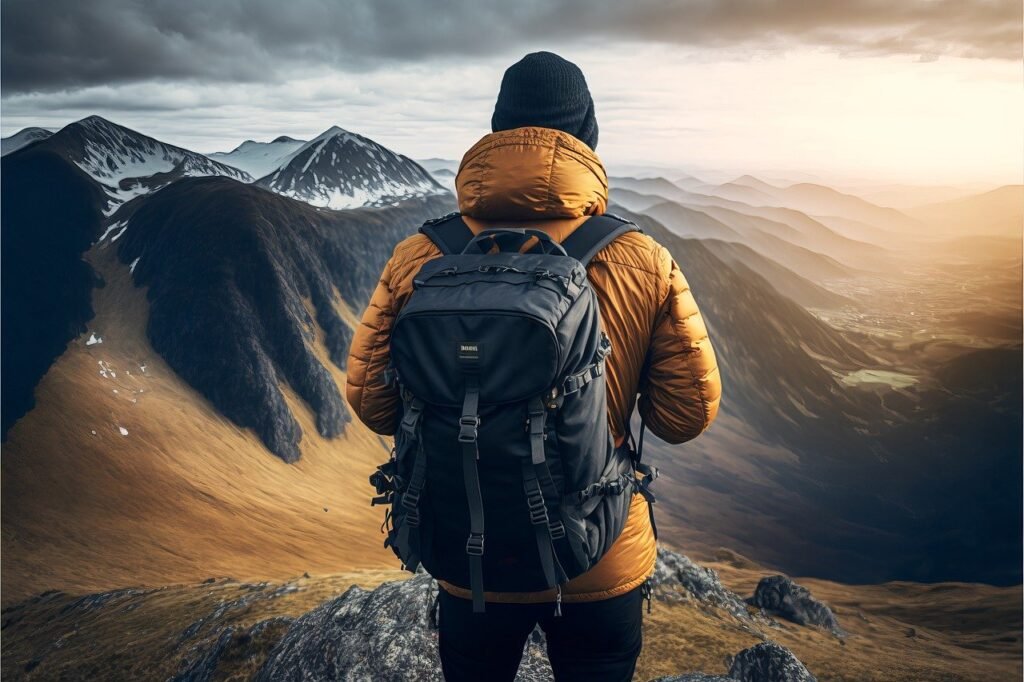What to Do If You Get Lost on a Trail
Hiking offers an incredible way to connect with nature, challenge yourself physically, and explore new landscapes. However, even the most experienced hikers can find themselves lost in the wilderness, but
Losing your way on a trail can be a frightening experience, but with the right knowledge and preparation, you can stay safe and increase your chances of finding your way back.
In this comprehensive guide, we will cover everything you need to know about what to do if you get lost while hiking, from prevention strategies to survival techniques.
1. Prevention: How to Avoid Getting Lost in the First Place
The best way to deal with getting lost is to prevent it from happening in the first place. Before heading out on a hike, take the following precautions:
a. Plan and Research Your Route
- Study maps and guidebooks to understand the trail’s layout.
- Check for any recent reports about trail conditions.
- Know where key landmarks, trail junctions, and water sources are.
b. Tell Someone Your Plans
- Inform a friend or family member of your hiking itinerary.
- Provide details about your planned route and estimated return time.
- If possible, use a hiking app or GPS device that allows for location sharing.
c. Carry the Right Gear
- A detailed map and a compass (and know how to use them).
- A fully charged phone with GPS (but do not rely solely on technology).
- A whistle, flashlight, and signal mirror for signaling for help.
- Extra food and water in case your hike takes longer than expected.
- Layers of clothing to prepare for unexpected weather changes.
d. Stay on Marked Trails
- Avoid taking shortcuts or exploring off-trail areas.
- Pay attention to trail markers and natural landmarks.
- Regularly check your position on a map or GPS.

2. Recognizing That You Are Lost
Many hikers don’t realize they are lost until they have wandered too far. Here are some signs that indicate you may have lost your way:
Signs that indicate you are lost
- The trail markings or signs are no longer visible.
- You don’t recognize any landmarks from your map or previous research.
- The terrain has changed unexpectedly (e.g., you were following a clear path, but now you’re in dense vegetation).
- Your GPS or phone shows you are far from where you intended to be.
- You have been walking for a long time without reaching a familiar point.

Once you suspect you are lost, it is crucial to remain calm and take immediate action.
3. STOP: The Golden Rule When You Get Lost
If you realize that you are lost, follow the STOP method:
S – Stop Moving
- Avoid panicking and resist the urge to keep walking aimlessly.
- Find a safe place to sit and gather your thoughts.
T – Think
- Recall the last place where you were certain of your location.
- Try to retrace your steps in your mind.
- Consider any landmarks or features you recently passed.

O – Observe Your Surroundings
- Look for trail markers, signs, or footprints that might indicate the correct direction.
- Listen for running water, roads, or voices that could lead you to safety.
- Check the position of the sun to determine directions if you don’t have a compass.
P – Plan Your Next Steps
- Decide whether to stay put or attempt to find your way back.
- If you are in a high-risk environment (e.g., near a cliff or in extreme weather), focus on safety first.
4. When to Stay Put vs. When to Move
HOW TO KNOW IF YOU HAVE TO DECIDE TO STAY
- If it is close to nightfall or bad weather is approaching.
- If you are injured or exhausted.
- If you have no clear sense of direction and may wander further away.
- If you believe someone is searching for you and you want to be easily found.
When to Move
- If you can see a clear and safe path back to a known location.
- If you are near a water source but need to find shelter.
- If you spot a road, river, or sign of human activity that leads to safety.
5. Finding Your Way Back Safely
If you decide to move, follow these best practices:
a. Follow the Path of Least Resistance
- Avoid steep cliffs, dense forests, or areas with dangerous wildlife.
- Follow streams or rivers downstream; they often lead to roads or settlements.
- Look for ridges or high points to get a better view of the landscape.
b. Use Natural Navigation Techniques
- The sun rises in the east and sets in the west, which can help with direction.
- Moss often grows on the north side of trees in the Northern Hemisphere.
- In clear weather, use the stars (the North Star points north in the Northern Hemisphere).
c. Mark Your Trail
- Leave small markers, such as stacked rocks or sticks, to avoid walking in circles.
- Avoid damaging nature; use biodegradable markers like sticks instead of carving trees.

6. Signaling for Help
If you need to be rescued, signaling is key. Here are some ways to attract attention:
a. Sound Signals
- Use a whistle: Three short blasts is a universal distress signal.
- Shout loudly at regular intervals.
b. Visual Signals
- Use bright clothing or reflective materials to increase visibility.
- Create large ground signals (e.g., spelling “HELP” with rocks or branches).
- Use a signal mirror or flashlight to reflect sunlight.
c. Fire and Smoke
- If conditions allow, start a small fire to generate smoke.
- Be mindful of fire safety and avoid starting wildfires.
7. Surviving in the Wilderness
If you have to spend an extended period lost, focus on survival:
a. Finding Shelter
- Seek natural shelters such as caves or dense tree cover.
- Build a basic shelter using branches, leaves, and other available materials.
b. Finding Water
- Look for streams, rivers, or rainwater collection areas.
- Purify water by boiling or using a filtration system if you have one.
c. Conserving Energy and Staying Warm
- Avoid unnecessary movement to conserve energy.
- Layer clothing and use insulation (e.g., dry leaves) to retain body heat.
8. What to Do After Rescue
Once you are found or find your way back, take the following steps:
- Rehydrate and eat to replenish lost energy.
- Inform authorities if you were reported missing to avoid unnecessary search efforts.
- Reflect on what went wrong and how to prevent it in the future.
- Share your experience to help others learn from it

CoNCLUSIONS
Getting lost on a trail can be a scary experience, but with the right mindset and knowledge, you can handle the situation safely.
Prevention is always the best approach, but if you do find yourself lost, remember to STOP, assess your surroundings, and decide on the best course of action.
Whether staying put or attempting to find your way back, staying calm and prepared is key to survival. By following these guidelines, you can increase your chances of staying safe and making it back to safety.
Learn more special hiking tips.








